Learn two wire-splicing methods used by our master electrician.
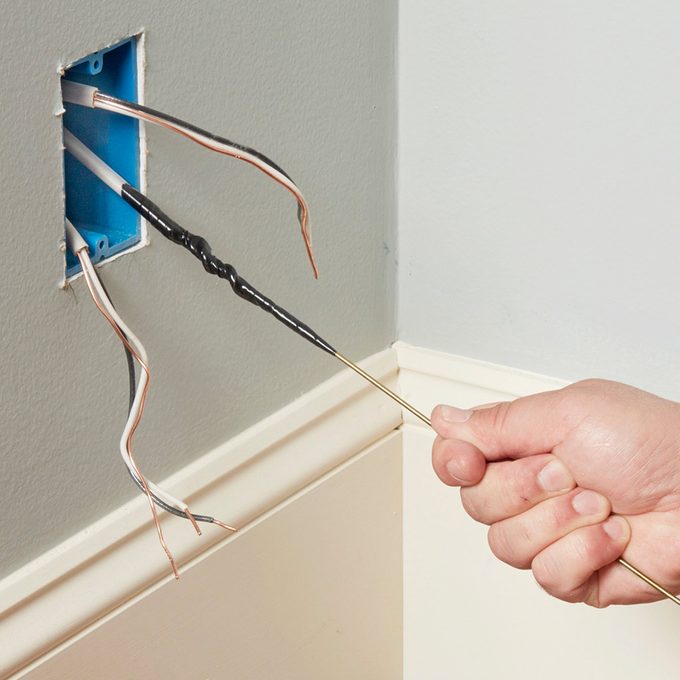
I apply a glaze hanger to fish electric cablevision through walls, and for longer runs, bare copper wire.
Cut your cable at an bending and so its end is tapered instead of blunt. Leave the wire nearest the point of the angle cutting well-nigh 3 in. longer than the other two wires. Straighten the coat hanger and make a pocket-sized loop at the end.
Feed the wire through the loop and wrap it around the glaze hanger. Start your tape wrap on the cable, to a higher place the splice. Tightly wrap the record spirally until you've wrapped down onto the coat hanger. Each sequent wrap overlaps the previous one, reducing the possibility that a tape edge volition snag on something when yous're pulling it past obstructions.
Copper wire isn't as stiff as a glaze hanger, so information technology'south probable to pull gratuitous of the coat hanger–way splice. If you're using a bare copper wire as your angling tool, employ a Western Wedlock splice. Start with two L's, then wrap each wire around the other without looping them back on themselves. The taping footstep is the same for both methods. — Al Hildenbrand, Master Electrician
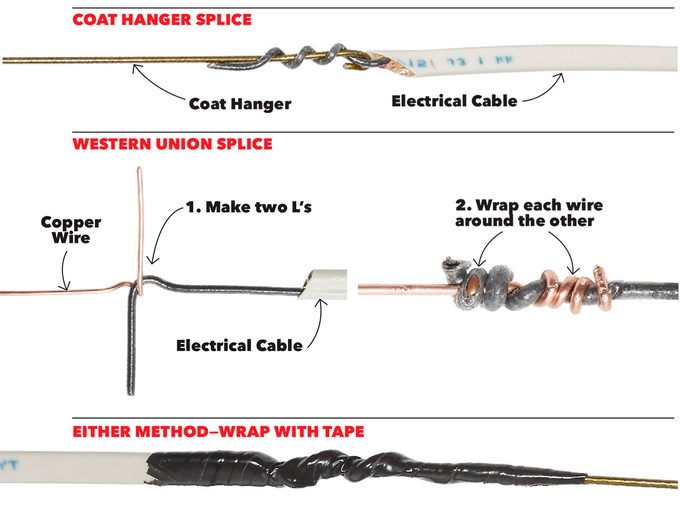
These are the 8 virtually mutual electrical lawmaking violations DIYers brand:

Doing Electric Work for Friends and Family
Many jurisdictions across North America permit you to do your ain electrical piece of work in your dwelling house. As long as it passes inspection, there'south no code violation concerns for DIYers handling their own wiring. Trouble is, once friends and family hear that you're good at electrical work, requests to help with theirs may get-go coming. This is a code violation in most places. Working on your own electrical system is fine, only only licensed electricians tin can piece of work on someone else's.
 Family Handyman
Family Handyman
Choosing the Wrong Excursion Billow
To aid yous sympathise which electrical protection goes where, consider what each type of billow was designed to practice and make certain to follow the national electric code.
Standard Excursion Breaker
Circuit breakers protect dwelling house electric wiring and equipment similar furnaces, air conditioners, dryers and stoves. Standard excursion breakers are amend at protecting wiring and equipment than preventing fires and protecting people. That'southward why they accept largely been replaced by GFCIs and AFCIs. There are but a few places left where standard circuit breakers tin exist used, typically for large home electrical appliances.
Basis Fault Circuit Interrupter
Ground mistake circuit interrupters (GFCIs) protect people in areas where they are likely to exist using small appliances and where water is present. GFCI breakers and outlets have been around for awhile, and virtually people know they're required in bathrooms, kitchens and outdoors. But our experts are even so finding home electrical violations, especially in garages, crawl spaces, storage/piece of work areas in unfinished basements, wet confined (within vi anxiety of a sink) and sump pumps. And don't forget that GFCIs need to be readily accessible to be reset. This means they shouldn't be installed on the ceiling or buried under a hydro massage tub without an access console.
Arc fault circuit interrupter
Arc mistake circuit interrupters (AFCIs) prevent fires in living areas where appliance cords are decumbent to exist pinched or crimped, or chewed by pets. They used to be required simply on sleeping accommodation circuits, simply the National Electric Lawmaking at present requires AFCI protection in all living areas. They're equipped with sophisticated electronics that can detect an arcing condition (like in a frayed lamp cord), which may not be detected by a standard circuit billow until after a fire has started. AFCI protection is not but required for new construction. Information technology'south also required where branch-circuit wiring is modified, replaced or extended into existing homes. Plus: All DIYers need to know these 24 acronyms.
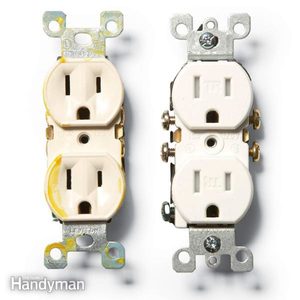 Family Handyman
Family Handyman
Watch this video to acquire more most common electrical mistakes and then you don't make them:
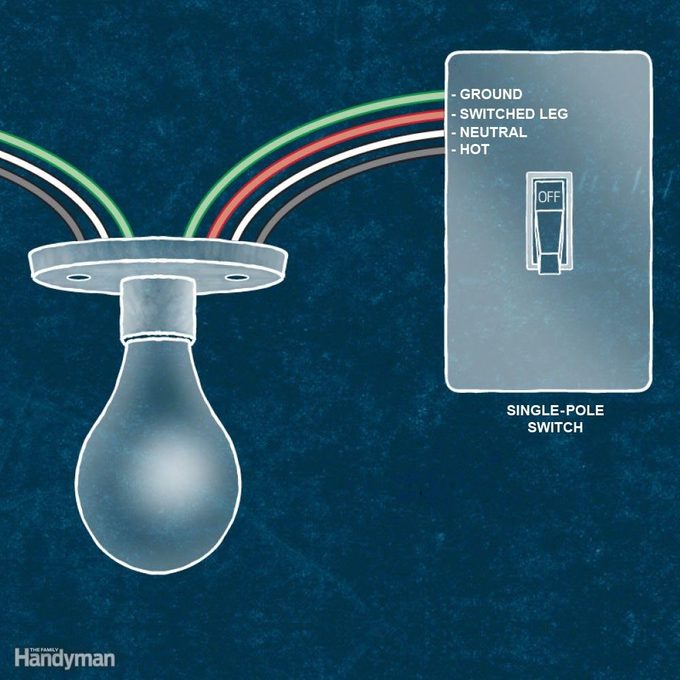 Family Handyman
Family Handyman
Wiring Switches Without a Neutral Wire
All switch locations need a neutral wire. This national electrical code was mainly implemented to arrange potential hereafter uses. Electronic switches require a small amount of constant electricity and therefore need a neutral wire run to them. There are exceptions to this NEC code, simply if the walls are currently open anyway, don't make the adjacent person fish in a wire. Do it right and make sure there's a neutral wire in the box. Learn how to wire a 3-way light switch yourself here.
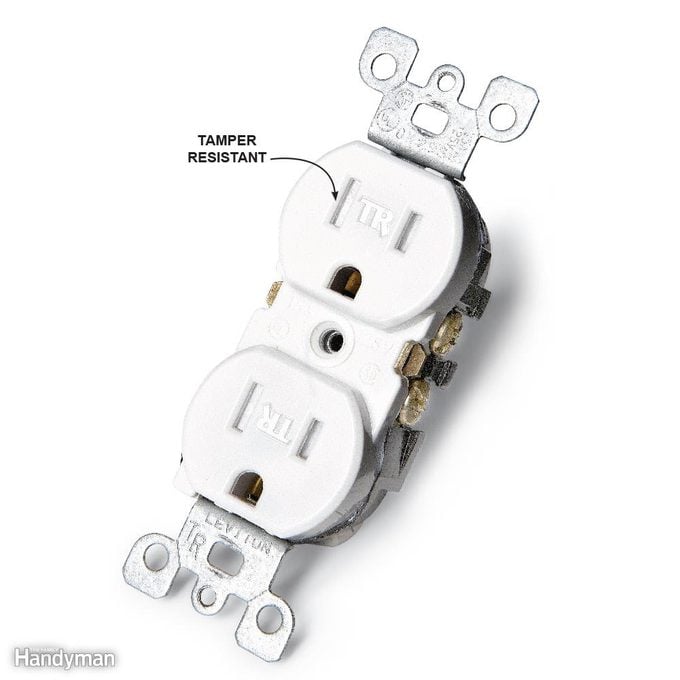 Family unit Handyman
Family unit Handyman
Forgetting Tamper-Resistant Receptacles
Tamper-resistant receptacles are designed to end a child from inserting an object, such every bit a paper clip. They're required for all locations, indoors and out. Tamper-resistant receptacles are a swell invention, then utilize them — it'southward national electric code. We'll show you lot how to correctly install a tamper-resistant outlet.
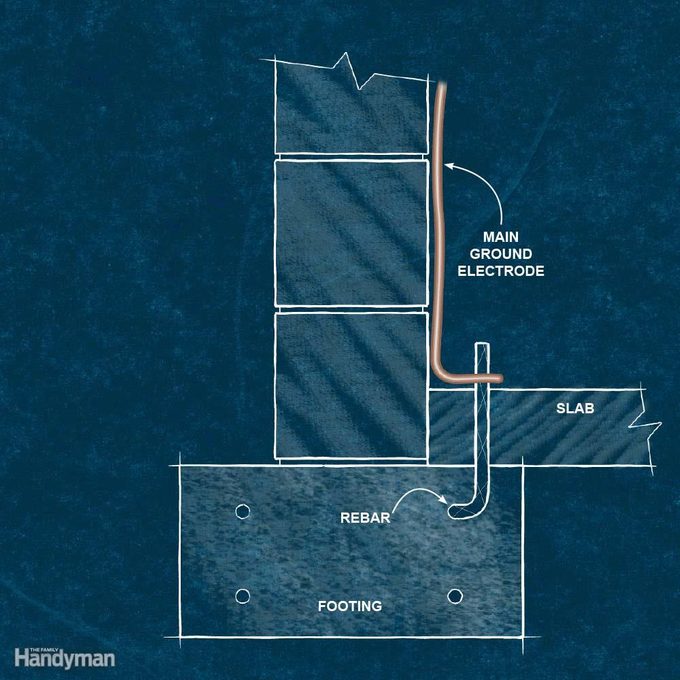 Family unit Handyman
Family unit Handyman
Using a Ground Rod Electrode When At that place's a Better System Available
For a long time, metal cloak-and-dagger h2o pipage was considered the best grounding electrode available, but virtually all underground water piping today is plastic. And information technology turns out that rebar in physical footings or the foundation for a house is actually a more constructive grounding organization than the ground rods we've been using for decades. And so if there's rebar in the new footings, that rebar needs to be used as the main grounding electrode. In a nutshell, if a new home has footings with at least twenty ft. of 1/2-in. rebar, the rebar embedded in those footings needs to exist used as the chief grounding electrode. This new provision in the national electric lawmaking requires a lot of coordination between the trades and projection managers. Electricians ordinarily show upwards long after the physical people accept moved on, merely expert advice is much easier work than busting up concrete. Plus: Check out these 11 real-life epic electric fails.
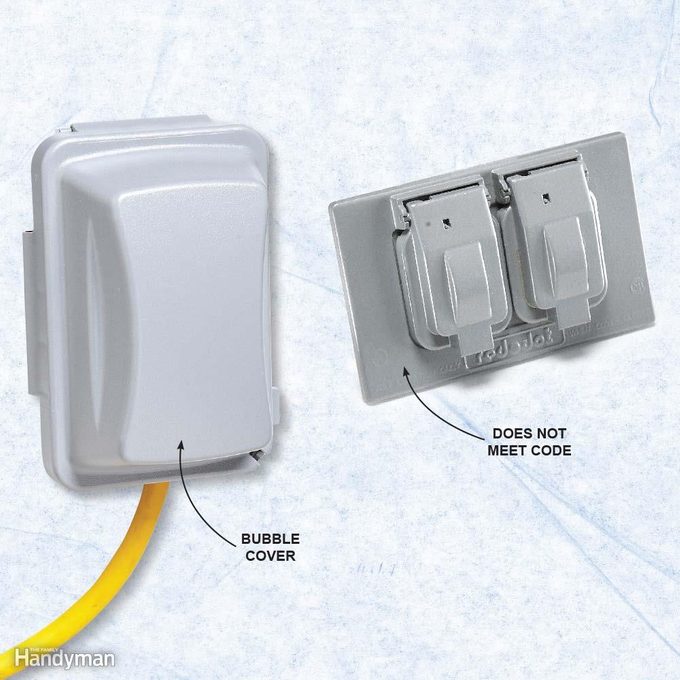 Family Handyman
Family Handyman
Installing the Wrong Cover On an Outdoor Receptacle
On outdoor receptacles, flat covers provide protection only when a receptacle isn't in utilise. Just it's not uncommon for extension cords to exist plugged in for extended periods of time — for vacation lights, for instance. In-use or "bubble covers" provide protection at all times. The national electric lawmaking defines a "moisture location" equally an area that is subject to saturation with h2o or other liquids, and unprotected locations exposed to the weather condition. The national electrical code has another definition for "damp locations" that is more subjective, but if you lot call up the receptacle is going to get moisture, use an in-apply cover. And don't forget the weather-resistant receptacle. The national electric lawmaking requires that all 15- and 20-amp receptacles exist rated as weather-resistant and tamper-resistant when installed in both wet and damp locations. Larn how to install outdoor lighting and an outlet hither.
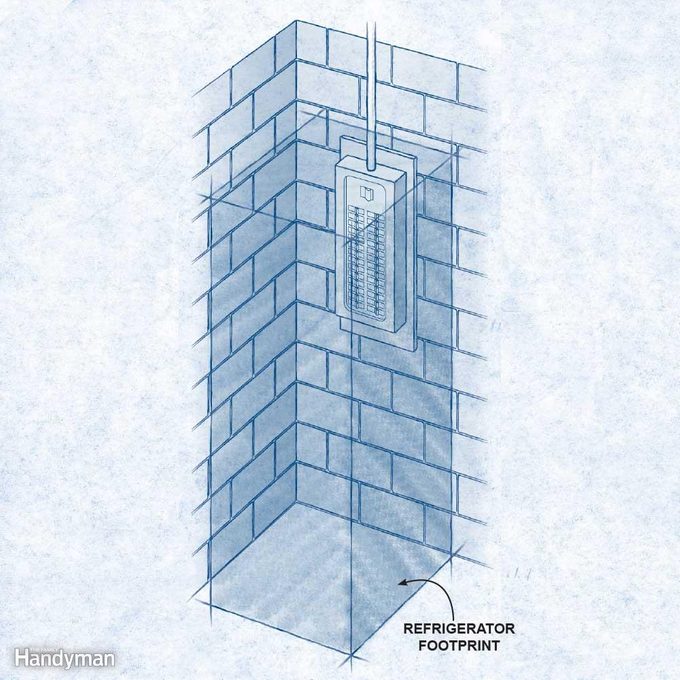 Family Handyman
Family Handyman
Crowding a Service Panel
A service panel requires a working clearance that's xxx-in. wide, three feet deep and six anxiety eight inches high in the national electric code. Here'south a expert rule of thumb: If yous can't park a refrigerator in front of the console, you don't have enough working space. These clearances are designed to protect the person working on the panel. It'due south difficult to work safely when your artillery are pinned to your sides. The panel also needs to be readily accessible, meaning the area should not be used equally storage space or crave a ladder for access.
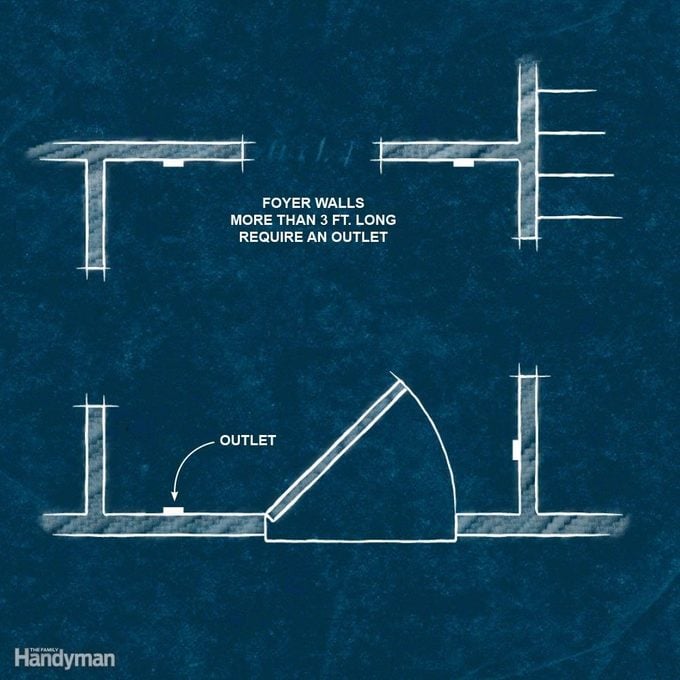 Family Handyman
Family Handyman
Installing Besides Few Receptacles
The purpose of this national electric code is to reduce the apply of extension cords. From whatsoever point forth a wall line, a receptacle outlet needs to be within reach of a six-foot appliance cord, and that six feet cannot be measured beyond a passageway. The bottom line is that extension cords offset fires and create tripping hazards — the fewer extension cords, the better. Plus: Check out these abode inspector horror stories.
 Family Handyman
Family Handyman
Bereft Electrical Bonding
Grounding is non the same as bonding. Plumbing, phone lines, coaxial cable and gas pipe systems need to be not only grounded but also bonded to one another. Bonding equalizes the voltage potential between conductive systems. This profoundly reduces the adventure of a person becoming the path for current flow betwixt ii conductive systems in case 1 of the systems becomes energized. As well, in a lightning strike, equalized voltage potential minimizes the take a chance of extremely high current jumping (arcing) between 2 systems that can cause a burn down. Plus: You need to see these 36 almost unbelievable plumbing and electrical goofs.












0 Response to "Learn from the Pros: 2 Wire-Splicing Methods"
Postar um comentário